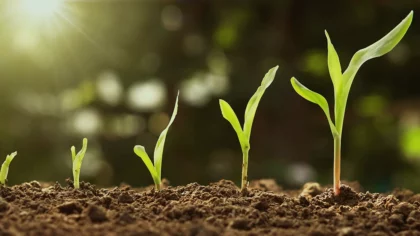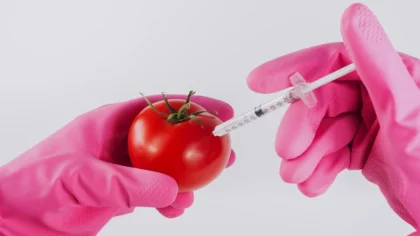The 2025 Aquaculture Market Report gives an overview of the evolving sector and its role in meeting global seafood demand amidst overfishing and environmental challenges. As a sustainable alternative to traditional fishing, aquaculture drives innovation in farming methods, feed development, and water quality management to enhance efficiency and minimize ecological impact. This report explores key trends, including recirculating aquaculture systems (RAS), advancements in genetics and breeding technologies, and plant-based and alternative protein feeds. By profiling leading aquaculture firms, technology innovators, and research initiatives, the report offers valuable insights into the industry’s future. It highlights opportunities for sustainable growth and technological advancements that drive efficiency and support global food security.
This aquaculture report serves as a reference for stakeholders within the industry, investors, policymakers, and economic analysts, providing a snapshot of the industry’s health to map its trajectory for innovation and growth in the coming years.
StartUs Insights Aquaculture Market Report 2025
- Executive Summary
- Introduction to the Aquaculture Report 2025
- What data is used in this Aquaculture Report?
- Snapshot of the Global Aquaculture Industry
- Funding Landscape in the Aquaculture Industry
- Who is Investing in Aquaculture Solutions?
- Emerging Trends in the Aquaculture Industry
- 5 Innovative Aquaculture Startups
Executive Summary: Aquaculture Industry Outlook 2025
This report is created using data obtained from the Big Data and AI-powered StartUs Insights Discovery Platform, covering more than 4.7 million global companies, as well as 20K+ technologies and emerging trends. We also analyzed a sample of 400+ aquaculture startups developing innovative solutions to present five examples from emerging aquaculture industry trends.
- Industry Growth Overview: The aquaculture industry is growing steadily at an annual rate of 7.42%, with more than 4000 companies globally. The sector’s innovations address global seafood demand and ensure sustainability.
- Manpower & Employment Growth: Global manpower exceeds 320000 professionals, with over 14000 new employees added last year. This reflects the industry’s capacity for workforce expansion and skill development.
- Patents & Grants: The industry shows innovation with over 38000 patents filed and more than 1000 grants awarded. These activities support research and technological advancements.
- Global Footprint: Key country hubs include the USA, India, Norway, the UK, and Australia. Leading city hubs, such as Singapore, Hyderabad, Oslo, Melbourne, and Bergen, drive regional aquaculture activity.
- Investment Landscape: The industry has attracted over 1500 investors, with more than 2000 funding rounds closed. The average investment value per round is USD 19.8 million.
- Top Investors: The key investors such as Mitsui & Co., SparkFood, Creadev, and more have collectively invested over USD 1 billion in aquaculture.
- Startup Ecosystem: Innovative aquaculture startups include PaRAS Aqua (Partial Air-driven Recirculation Aquaculture), La Ferme Intégrale (Large-scale Aquaponic Farming), AquaFood (Sustainable Seafood Production), Aquanzo (Super Food for Aquafeed), and EcoHarvest (Marine Ornamental Fish Supply).
- Recommendations for Stakeholders: Investors should prioritize sustainable technologies and innovative feed solutions to enhance productivity while reducing environmental impacts. Entrepreneurs should focus on developing scalable aquaculture technologies addressing efficiency and sustainability. Governments need to implement supportive regulations, promote sustainable practices, and invest in R&D. Companies must enhance operational efficiency through digital tools and focus on sustainable production methods to meet growing consumer demand for eco-friendly seafood.
Explore the Data-driven Aquaculture Industry Report for 2025
The Aquaculture Report 2025 uses data from the Discovery Platform and encapsulates the key metrics that underline the sector’s dynamic growth and innovation. Our database includes 449 startups and over 4000 companies worldwide. The industry shows an annual growth rate of 7.42%, reflecting steady expansion. There are over 38000 patents and 1000 grants to indicate innovation within the sector.
Global manpower exceeds 320000 professionals, with 14000 new employees added last year, which showcases workforce development. The top country hubs include the USA, India, Norway, the UK, and Australia, while Singapore, Hyderabad, Oslo, Melbourne, and Bergen are leading city hubs driving industry activity.
What data is used to create this aquaculture report?
Based on the data provided by our Discovery Platform, we observe that the aquaculture industry ranks among the top 5% in the following categories relative to all 20K topics in our database. These categories provide a comprehensive overview of the industry’s key metrics and inform the short-term future direction of the industry.
- News Coverage & Publications: The aquaculture industry had over 3000 publications last year.
- Funding Rounds: It also features prominently in funding, with 2000 rounds recorded in our database.
- Manpower: The industry employs over 320000 workers globally and added more than 14000 new employees last year.
- Patents: It shows significant innovation, with over 38000 patents filed.
- Grants: Over 1000 grants support research and development initiatives.
- Yearly Global Search Growth: The global search interest in aquaculture has grown by 3.89% in the past year, reflecting increasing engagement.
A Snapshot of the Global Aquaculture Industry
The aquaculture industry is growing at an annual rate of 7.42%, with over 400 startups driving innovation. Among these, 180 are early-stage startups, and more than 240 mergers and acquisitions highlight industry consolidation.
The sector shows significant innovation, evidenced by over 38000 patents filed and contributions from more than 5900 applicants globally. Patent growth is strong, with an annual increase of 8.16%. China leads with over 21000 patents, followed by South Korea with more than 4000 patents. This activity highlights the importance of intellectual property in sustaining advancements within the aquaculture market.
Explore the Funding Landscape of the Aquaculture Industry
The aquaculture industry shows active investment dynamics, with an average investment value of USD 19.8 million per funding round. It reflects investor confidence in the sector’s potential. The industry has attracted more than 1500 investors and demonstrates widespread interest from diverse funding sources. Over 2000 funding rounds have been closed, showcasing continuous capital flow into aquaculture innovations and operations. Further, more than 570 companies have secured investments. This highlights the sector’s growth opportunities and the diverse range of firms driving aquaculture’s expansion globally.
Who is Investing in Aquaculture Solutions?
The top investors in the aquaculture industry have combined investment values exceeding USD 1 billion, reflecting significant financial backing for the sector.
- Mitsui & Co. has invested USD 363.8 million across 2 companies.
- Sparkfood has allocated USD 355.1 million to 2 companies.
- Creadev has supported 3 companies with a total investment of USD 267.4 million.
- KKR & Co. has invested USD 181.2 million across 2 companies.
- Temasek Holdings has backed 3 companies with a total investment of USD 125.4 million.
- SalMar has allocated USD 114 million to 2 companies.
- BNP Paribas has invested USD 90.8 million across 3 companies.
Access Top Aquaculture Innovations & Trends with the Discovery Platform
Explore the emerging trends within aquaculture including the firmographic data:
- The Blue Economy includes over 13000 companies employing more than 1 million professionals worldwide. It added 55000 new employees last year and highlights its scope and workforce impact. With an annual growth rate of 0.70%, it supports sustainable ocean-based economic activities, including aquaculture.
- Sustainable Aquaculture focuses on environmentally friendly practices with 260 companies and over 24000 employees. The segment grew by over 1000 new hires last year, driven by an annual trend growth rate of 9.68%. This focus supports the industry’s transition toward eco-conscious operations.
- Recirculating Aquaculture Systems (RAS) involves 170 companies with more than 4000 employees. The sector added 370 employees last year and reflects steady adoption and a growth rate of 5.97%. RAS enhances productivity and sustainability by creating controlled, closed-loop farming environments.
5 Top Examples from 400+ Innovative Aquaculture Startups
The five innovative startups showcased below are picked based on data including the trend they operate within and their relevance, founding year, funding status, and more. Book a demo to find promising startups, emerging trends, or industry data specific to your company’s needs and objectives.
PaRAS Aqua implements Partial Air-driven Recirculation Aquaculture
Finnish startup PaRAS Aqua develops a modular fish farming system that integrates patented fish tanks with built-in water treatment technology. The system uses a partial air-driven recirculation method that connects tanks to a bioreactor which allows each tank to operate independently for aeration and solids removal. This design facilitates tank-specific management to enable the isolation of tanks during new fish introductions or depuration phases without disrupting overall operations. PaRAS Aqua offers benefits including enhanced fish growth and quality, reduced investment and operating costs, and the flexibility to implement an all-in-all-out production strategy.
La Ferme Intégrale operates Large-scale Aquaponic Farming
French startup La Ferme Intégrale implements large-scale aquaponic systems that combine aquaculture and hydroponics to produce fish and vegetables in a sustainable, closed-loop environment. Fish waste provides nutrients for plant growth, while the plants filter and purify the water, which is recirculated back to the fish tanks. This approach reduces water usage compared to traditional farming methods and eliminates the need for chemical fertilizers and pesticides. La Ferme Intégrale situates operations in peri-urban areas and ensures the delivery of fresh, local, and healthy produce to nearby communities to enhance food security and promote environmentally responsible agricultural practices.
AquaFood focuses on Sustainable Seafood Production
Swedish startup AquaFood produces high-end fish mince, clean cold-pressed fish oil, and fine collagen powder by transforming underutilized fish production side streams into valuable products. The company uses technology to extract protein isolates while preserving their functional properties. This process yields versatile, boneless fish mince with customizable fat, moisture, and protein content for various seafood applications. The startup also offers pure fish oil with a subtle taste, ideal for supplements and industrial use, and premium collagen powder for supplements, cosmetics, or nutricosmetic formulations. AquaFood upcycles fish production by-products to enhance sustainability in the seafood industry and provide high-quality ingredients for diverse markets.
Aquanzo produces Super Food For Aquafeed
UK-based startup Aquanzo develops sustainable marine protein farming systems that cultivate Artemia, a small marine zooplankton, in large-scale tanks using agricultural byproducts. This approach provides a consistent and controlled feed ingredient to enhance fish and shrimp growth, disease resistance, and stress tolerance. The startup offers a portfolio of products for the aquafeed market and delivers a sustainable alternative to harvested fish, reducing CO₂ emissions. Aquanzo transitions from harvesting to farming marine ingredients and ensures an eco-friendly protein source for aquaculture.
EcoHarvest supplies Marine Ornamental Fish
US-based startup EcoHarvest produces sustainably farmed marine ornamental fish for the global aquarium industry. It uses natural seawater and cultivates its own microalgae and live fish food to ensure consistent quality and reduce reliance on external sources. The startup employs a proprietary feeding system to optimize larval feeding. This approach allows for the breeding of high-quality, socialized, and healthy fish while minimizing environmental impact. EcoHarvest offers an eco-friendly alternative to wild-caught specimens to alleviate pressure on marine ecosystems and meet the growing demand for ornamental fish responsibly.
Gain Comprehensive Insights into Aquaculture Trends, Startups, or Technologies
The aquaculture industry is set for steady growth in 2025, driven by innovation and rising global demand for sustainable seafood. Trends like sustainable aquaculture and recirculating aquaculture systems will advance eco-friendly practices and technological efficiency. As the blue economy framework expands, the industry will focus on balancing economic growth with environmental stewardship. Get in touch to explore all 400+ startups and scaleups, as well as all industry trends impacting aquaculture companies.



![Food and Beverage Industry: Top 10 Technology Trends [2025 & Beyond]](https://www.startus-insights.com/wp-content/uploads/2024/11/Food-and-Beverage-Industry-Trends-SharedImg-StartUs-Insights-noresize-420x236.webp)






